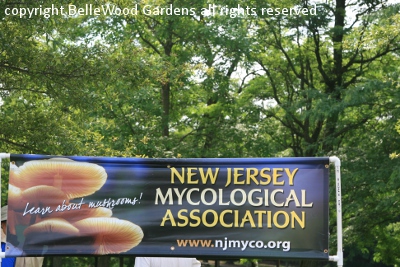
Sunday, 10 June 2012
NJMA Foraging Foray
Today we're off, me and Paul, for an NJMA foraging foray and potluck picnic at Deer Path Park's Round Mountain Section in Readington, New Jersey.
What's NJMA?

Just as the banner says, it's the New Jersey Mycological Association. Folks
fond of all fungi, edible or not. We foray, identify, make paper, dye yarn, and
oh yes, dine on delicious edible mushrooms that grow wild here in the Garden State.
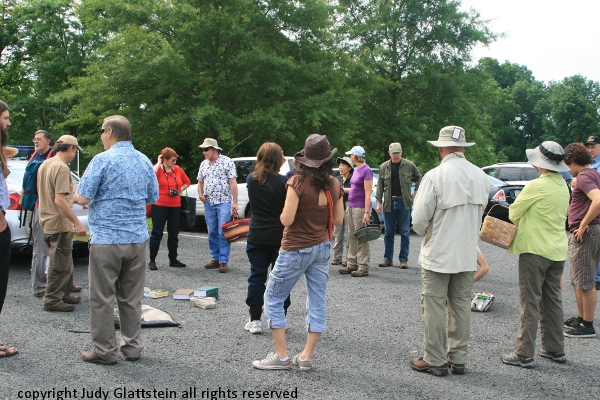
Our focus is much wider today. We'll be looking for all sorts of wild-growing edibles.
Gather round, collecting baskets in hand. (We didn't actually gather anything today.
June is kind of a slack time for foraging, before berries ripen.) But you can always learn.
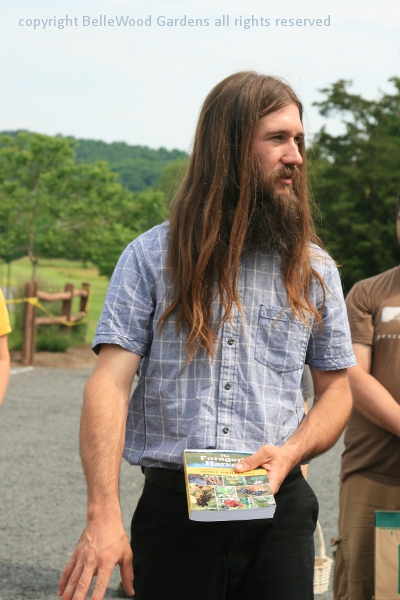
Today's special guest leader is Nathaniel Whitmore, an herbalist
knowledgeable about wild foods and herbal medicines. He brought
a number of field guides and floras for us to look at before we start.
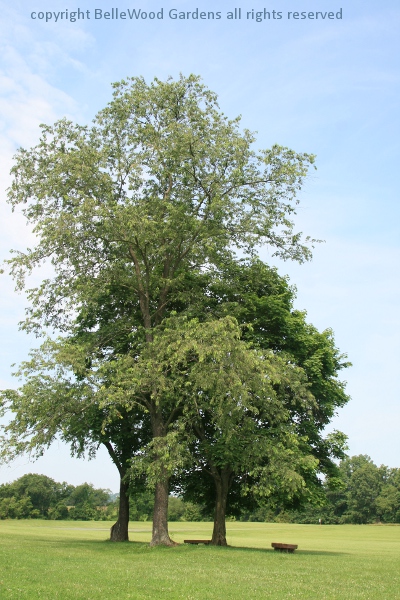
Not that we had far to go. Our first specimen is a large bird cherry
just a few steps away from the parking area. Its small fruits, green
at this season, are excellent for preserves or wine making, not fresh.
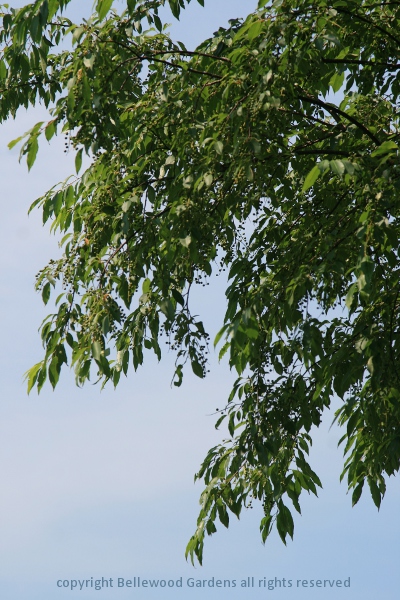
.
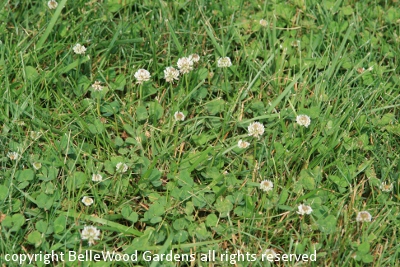
As we're traipsing over to the tree Nathaniel points out white clover. Introduced by European settlers, the flowers and leaves are edible both
raw and cooked. Use young leaves in salads, or in soups, casseroles, etc. But, Nathaniel pointed out, since we don't know how the park system
manages their turf grass it would be safer not to gather any clover, or any of the chickweed, sorrel, plantain, or other wild edibles growing here.
We pause and look at motherwort, wild onion, and milkweed. (Someone
here brought potato salad with milkweed flower buds for the potluck picnic.)
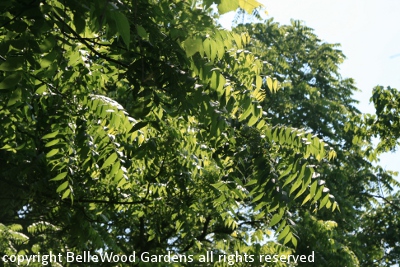
Here's a black walnut tree. The crushed leaves, Nathaniel tells us, can cure fungal infections.
The nuts, difficult to crack though they are, are very tasty. I mention that immature nuts, so tender
that a needle will pierce hull and nut, can be pickled. Been there, done that. I also know hulls and
inner bark make a good substantive dye. This year, though, there seem to be very few nuts set.

Elderflowers, if from the black elderberry with flat umbels of flowers, are good to eat,
both flower truss and subsequent berries. Red elderberry, with conical flower trusses, is
not good to eat. You can make fritters of the flowers. I make a non-alcoholic cordial. Very nice.
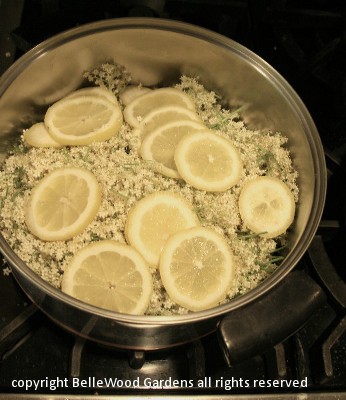
Onward. About noon I head back to the picnic area. Nathaniel and entourage are off in the woods, or mayhap near the pond. Both areas, as well as meadows, offer foraging opportunities. I'm hungry. And I want tasty food, not merely edible. There is a distinction. Besides, I'm curious. While it is not obligatory I was told than many of the potluck dishes will include foraged ingredients. Helpfully, the guidelines note that people should clearly write the ingredients of their dish, including what oils, spices, etc. on a card, which goes next to the dish. And please provide appropriate serving utensil(s). There was mushroom soup, foccacia with wild mushroom and spinach filling, the aforementioned potato salad, and lots more.

One woman brought sumac-ade and green nettle tea.
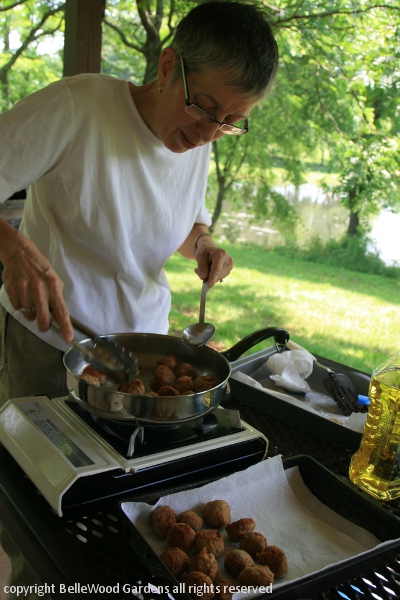
These yummy little tidbits are squirrel nuts. No, not nuts squirrels eat. Squirrel meat.
Braise about 7 squirrels. Shred the meat. Form into little balls. Chill. Coat with egg white
then bread crumbs, and repeat coating. Then saute to brown and reheat. Excellent! Crispy
outside, succulent inside. An adaptation, I was told, of the Dutch recipe for bitterballen.
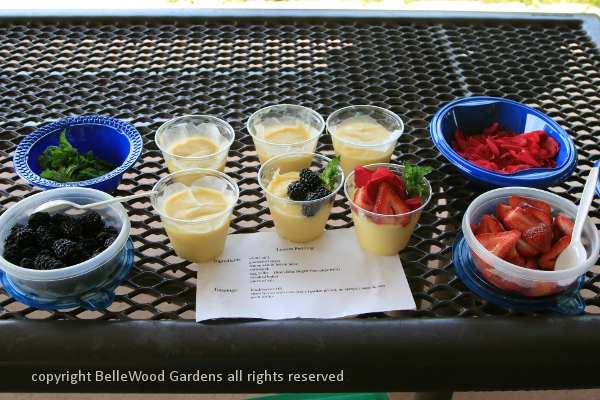
While I did bring a jar of pickled maitake mushrooms my main contribution was dessert.
Lemon pudding, with options for embellishment: blackberries, strawberries, rose petals,
sprigs of mint. I did grow both rose petals and mint, and strawberries are in season now.
The ten puddings I brought seemed to quickly disappear. Next year I'll make sure to be wilder.